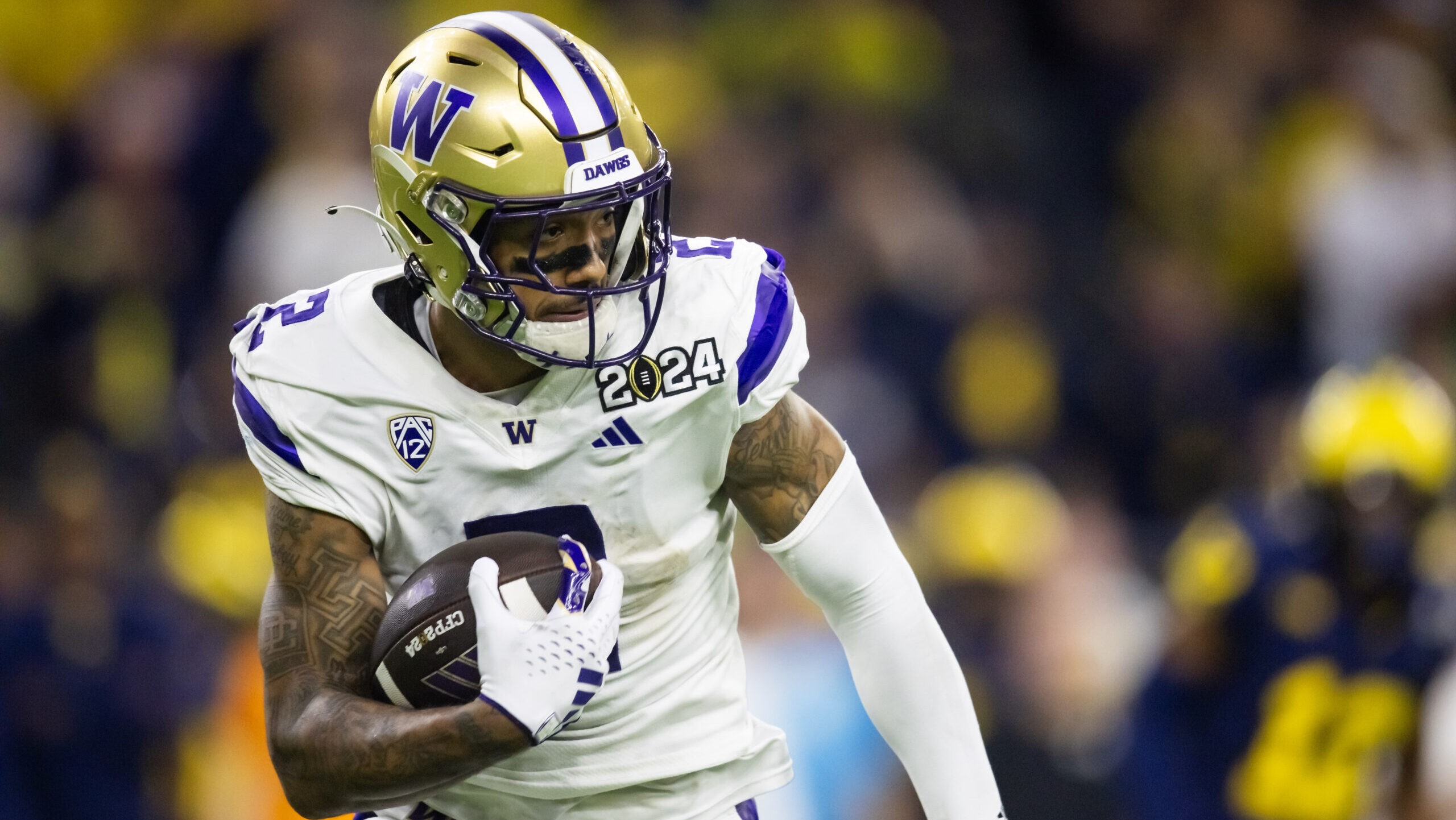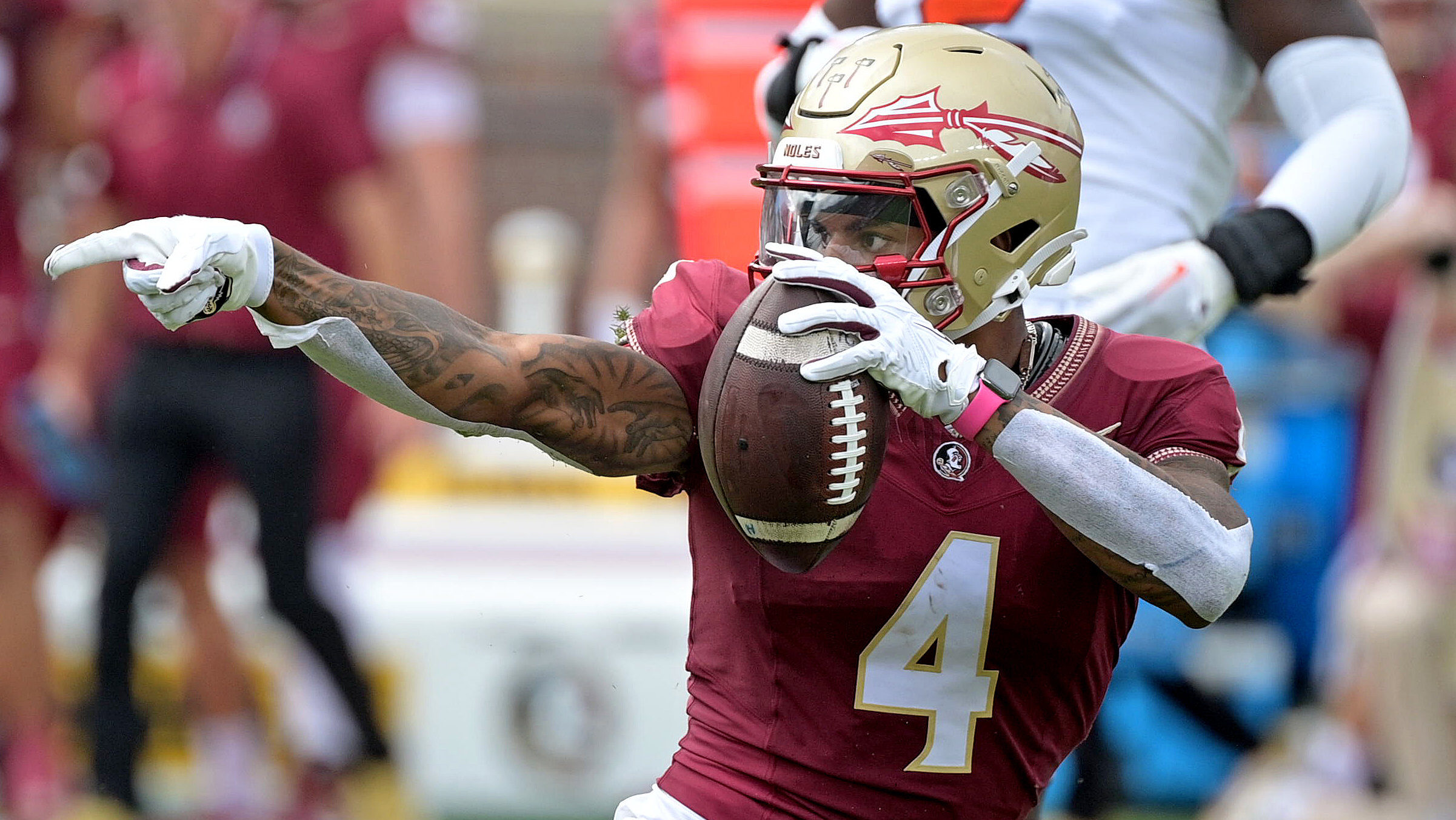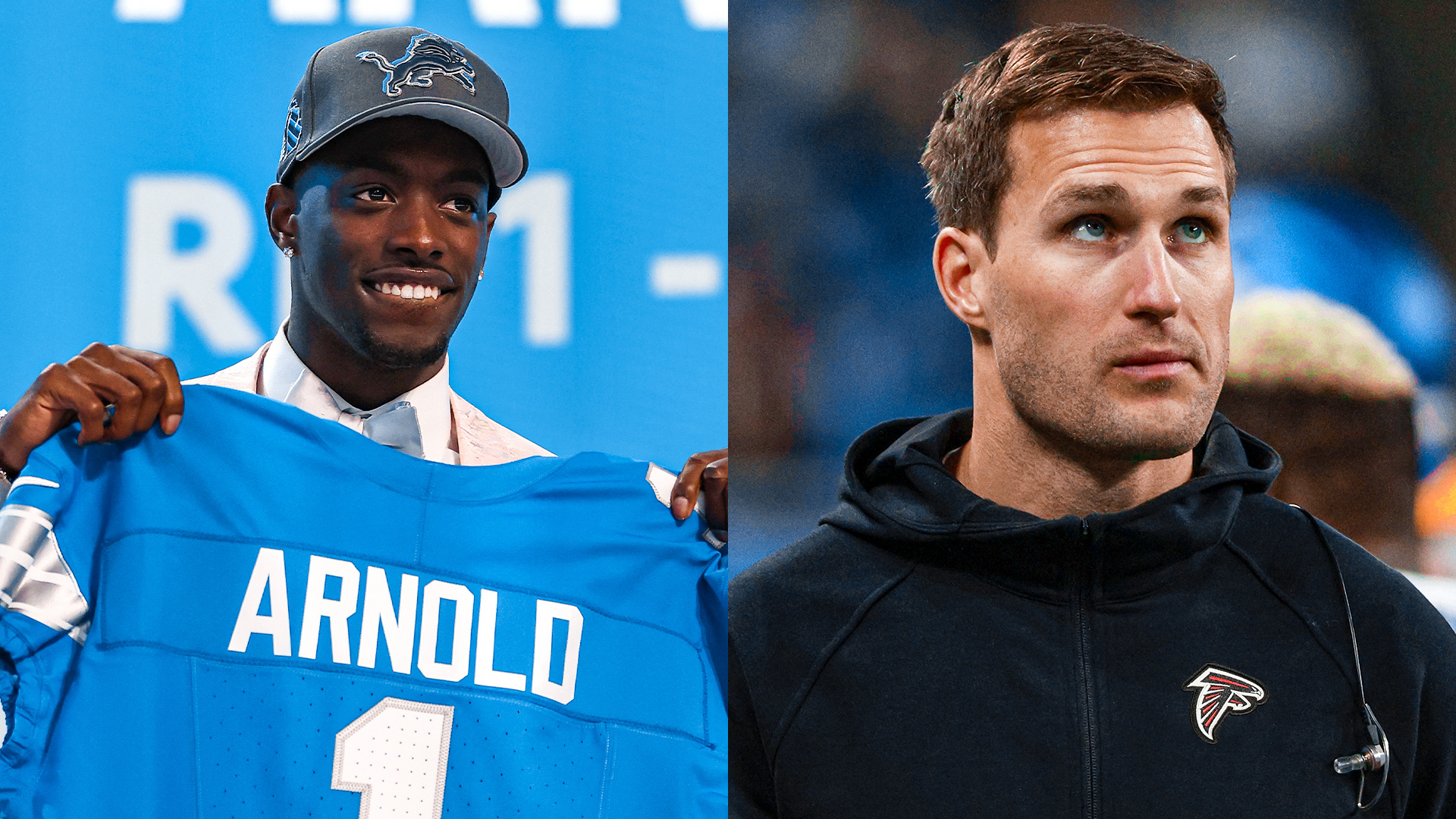Analysis
10/24/23
6 min read
2023 NFL Week 7 DFS: Lessons Learned From a Winning Lineup
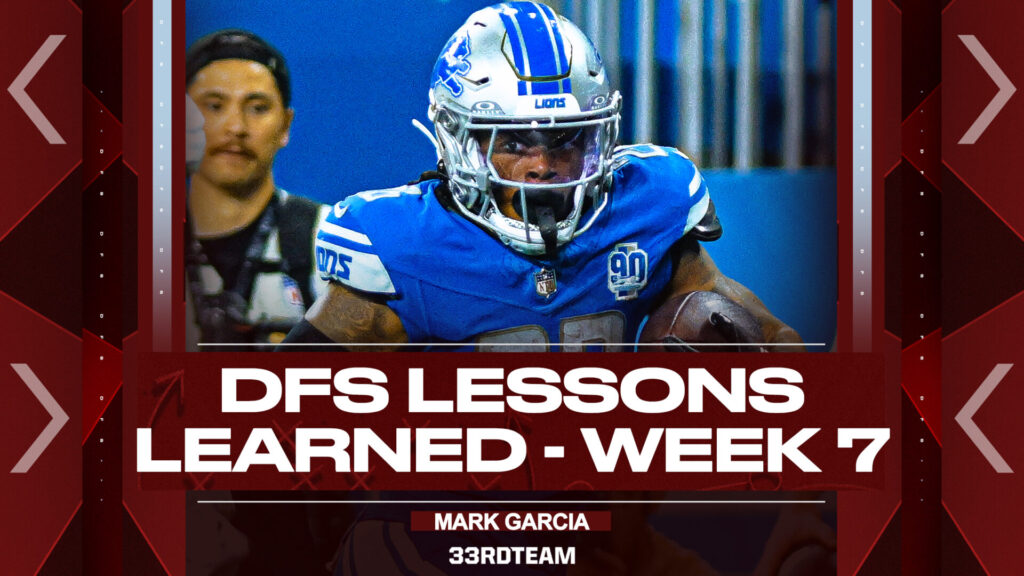
Reflection is an extremely underrated aspect of consistent DFS play. Think about this: How do pitchers, wide receivers or financial analysts remain on top?
They do so by learning, growing, being open to new ideas and practices, tweaking what works and what doesn’t and changing with the games themselves.
Reviewing your mistakes can give you staying power in any competition. Most of the top DFS players examine their play the following week — so what edge can we gain over even the most die-hard players?
Let’s examine the Week 7 slate and compare those conclusions with rosters from some of the top players in the game.
Week 7 DFS Lessons Learned
Week 7 Observations
Particularly at the running back position, Week 7 was fragile. And yet we know chalk will always develop as the industry echo chamber takes hold. That led me to attack the position through cheap running backs and the players priced up that the field didn't have interest in. Theoretically, we should be more willing to accept ownership at running back when the players also carry solid floors.
Subsequently, on a slate where the chalk at the position carries shaky floors, we should be looking to other players who have less expected ownership. I was all over D’Onta Foreman and Jerome Ford as players who carried similar ranges of outcomes to the chalkier Kenneth Walker and Isiah Pacheco. I missed Jahmyr Gibbs and was overweight Aaron Jones in my portfolio.
The consequence of paying down at running back and accepting the same ranges of outcomes as some of the higher-priced players for less salary and ownership is that it allows you additional salary to allocate to other, more variant positions. I allocated that salary to overweight stances on Cooper Kupp, Davante Adams and Stefon Diggs, all of whom largely failed on this slate. The optimal path to salary allocation on this slate became Patrick Mahomes or Lamar Jackson at quarterback paired with their tight end – Travis Kelce or Mark Andrews.
Finally, the optimal approach this week was a significantly underutilized path on the game tree (a game tree is a visual representation of all potential combinations of moves in a game — in NFL DFS, the game tree is borderline infinite) that included the two most expensive tight ends with the most costly quarterback and a balanced approach throughout the remainder of the roster.
But we must realize this path was not only a function of those players performing well but also a function of the high-priced wide receivers failing. In other words, all high-priced running backs and wide receivers had to fail while Kelce and Andrews succeeded for this strategy to work. That isn’t going to happen at great frequency, which is typically why double–tight end roster constructions are generally looked down.
That said, any path on the game tree is a potential optimal path. If the hit rate (the frequency that a similar roster construction becomes optimal) is higher than its utilization rate by the field, then there is inherent leverage in the roster construction in question. This discussion revolves around leverage, which the fields largely misunderstands.
Roster Examination
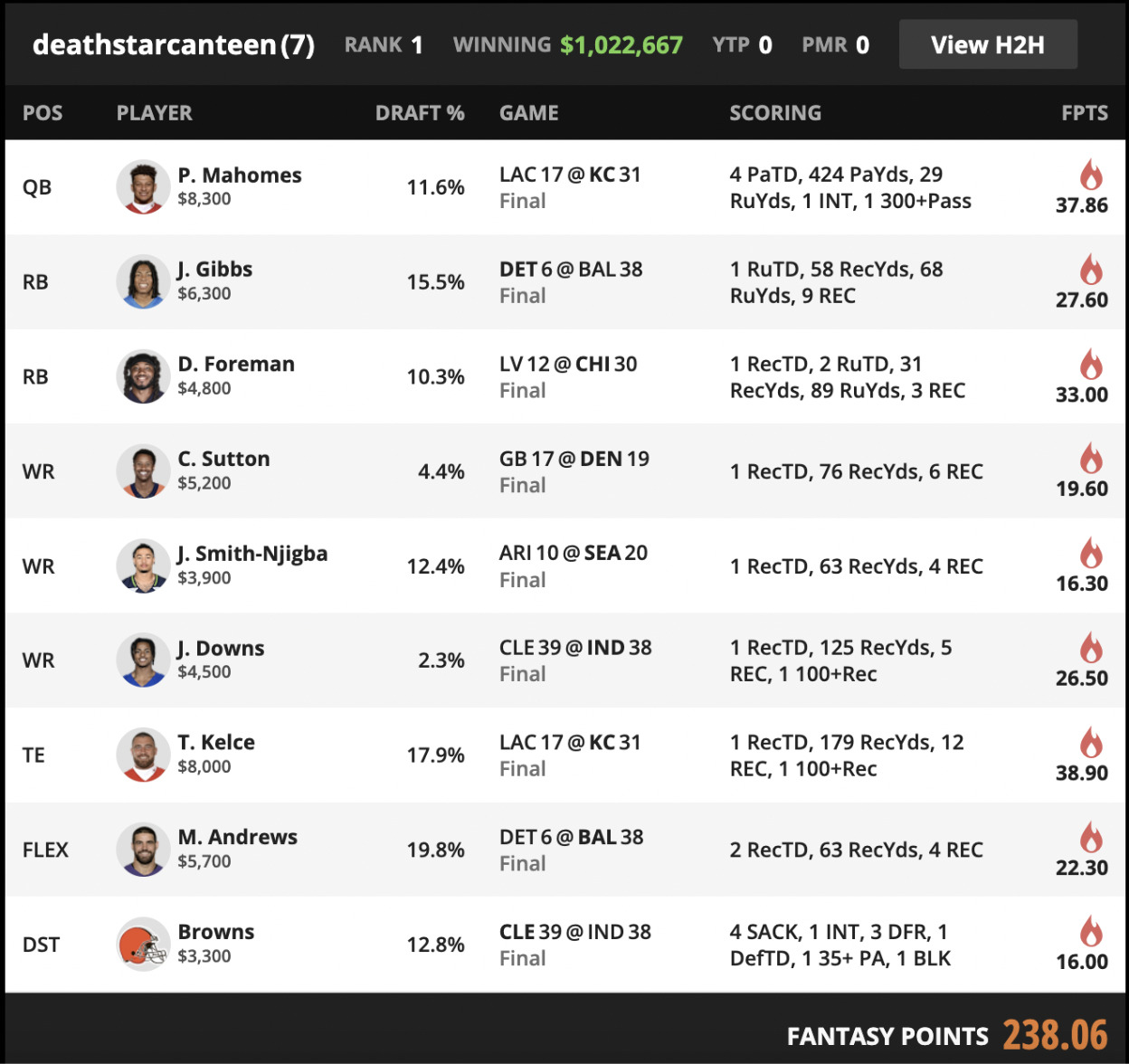
As we touched on above, some might look at this roster and view it as a poorly constructed luck box hit. Not so fast. If we take the discussion of the game tree further into the realm of causality, it will make more sense.
Causality deals with the interaction of variables and how certain outcomes can change based on the outcomes of other variables in an equation. In game theory, this method helps visualize how interacting variables work together. Let’s now relate this discussion to roster construction and salary allocation, which are present in NFL DFS game theory.
Every player is working with the same salary restriction of $50,000 on DraftKings. Every player is algorithmically assigned a salary within that structure, which limits the maneuverability of which players can be played together within the confines of the salary cap. We all understand that aspect of the game. But what goes frequently overlooked is how those salaries interact on each slate.
To sum up this thought process most succinctly, DFS players must spend their salary somewhere. Five years ago, in the land of workhorse running backs (oh, what a beautiful time it was), the typical answer to that riddle was to spend salary at running back. Nowadays, the weekly range of outcomes is greater at the elites at wide receiver than at running back, shifting the emphasis to spending salary at wide receiver.
But all the byes on the Week 7 slate left us with fewer options at both of those positions, which meant fewer players had to fail to shift the optimal allocation of salary. The causal factors dictate that we cannot simply spend up at every position due to the salary cap constraints. That means how players and their salaries interact within the salary cap is often more critical to DFS play than looking at individual ownership expectations.
Because there were only two running backs on the Week 7 main slate priced above $7,000, it lowered the number of players who had to “fail” for optimal salary allocation to point to other positions. That theoretical thought process led me to Foreman and Ford as staples in my roster portfolio. Furthermore, five primary wide receivers were priced at or above $8,000 on the Week 7 slate. None of those players put up a GPP-worthy score.
As such, the causal factors on the slate mandated we primarily allocate salary to the quarterback and tight end positions. We didn’t know this going in, but it is a valid theoretical approach that gained increased chances of happening due to the low number of players priced in the upper echelon of player pricing at the two primary positions: running back and wide receiver. That meant fewer players in those positions had to fail for optimal salary allocation to shift to more variant positions.
The theoretics will always back up a roster construction technique that carries a hit rate more significant than its utilization rate by the field, and the state of the Week 7 slate meant that fewer variables had to go right to shift optimal salary allocation to this underutilized construct.
It won’t always work out that way, and it’s impossible to tell if DraftKings user deathstarcanteen did this on purpose. Still, they built a highly leveraged and theoretically sound roster on a slate that called for increased exposure to underutilized roster construction techniques.
Follow The 33rd Team Podcast Network on Spotify and Apple Podcasts.




